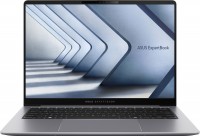Laptops Asus series VivoBook Pro (powerful)
Asus VivoBook Pro
Bright, inexpensive, and well-built, Asus' VivoBook laptops are so beloved by customers that over time this series has expanded significantly. At the beginning of 2022, Asus has three different directions at once: regular vivobooks, modified VivoBook with the prefix S in the name, and VivoBook Pro laptops, which are positioned by the manufacturer as models of the upper price category.
Here it is necessary to make a remark that the new 2021 VivoBook Pro laptops with OLED screens, an updated design and a redesigned keyboard in terms of performance and equipment are very close to the Asus ZenBook premium laptops. The only difference is that instead of the ScreenPad touchpad familiar from ZenBook, VivoBook models use either a traditional touchpad or an experimental DialPad that mimics the movements of the ASUS Dial controller to control "creative" programs a la Photoshop and Lightroom.
 |
The average 2021 VivoBook Pro is equipped with a fairly nimble 4- or 6-core multi-threaded Core i5 / Core i7 processor, a decent amount of RAM (note: at least 8 GB, more often 16 GB) and a capacious SSD of 512 – 1024 GB. Throw in optional graphics cards like the NVIDIA GTX 1650 (and more recently the RTX 3050) and you've got a candidate to fully replace your work desktop or outdated gaming PC that you can't find a new graphics card for these days.
The transition of VivoBook Pro to the next stage of development is symbolized not only by a powerful graphics card, but also by the use of cool OLED displays with a resolution increased to 2880x1800 pixels, reference colour reproduction, an increased margin of brightness and an increased refresh rate. However, there are also earlier variations of the VivoBook Pro with a more affordable Full HD display on the market. Of the additional goodies in the models of this series, Harman Kardon acoustics, a fingerprint scanner, a backlit keyboard and fast charging are often found. Cases are most often assembled from aluminium and plastic, which is very similar to other Vivobook laptops.















